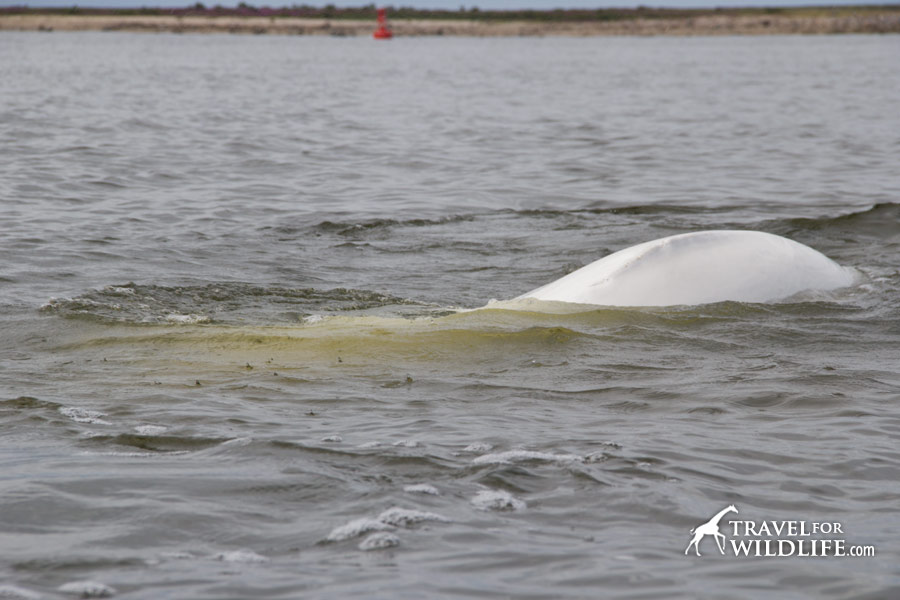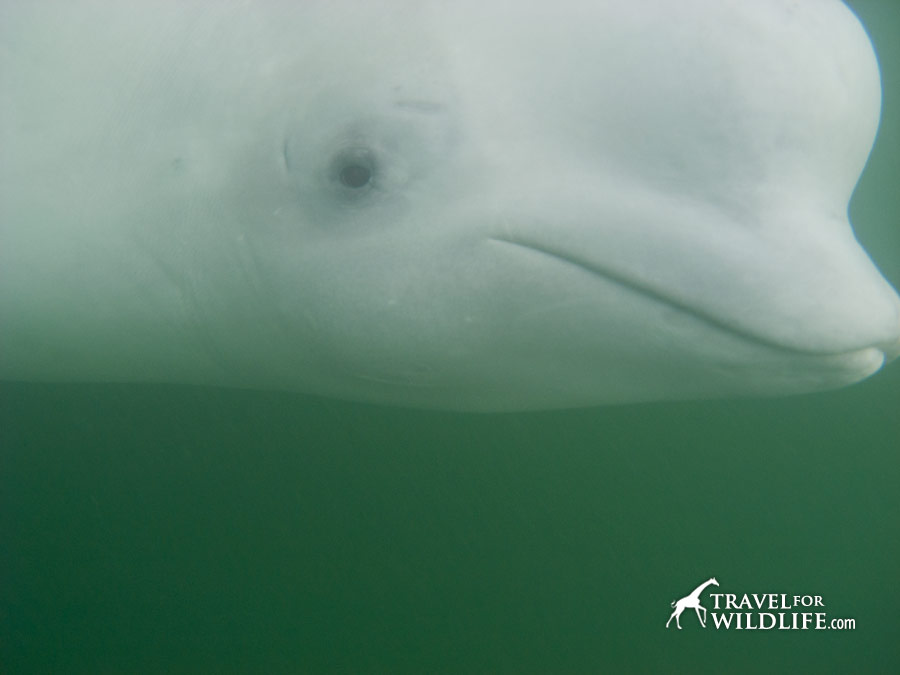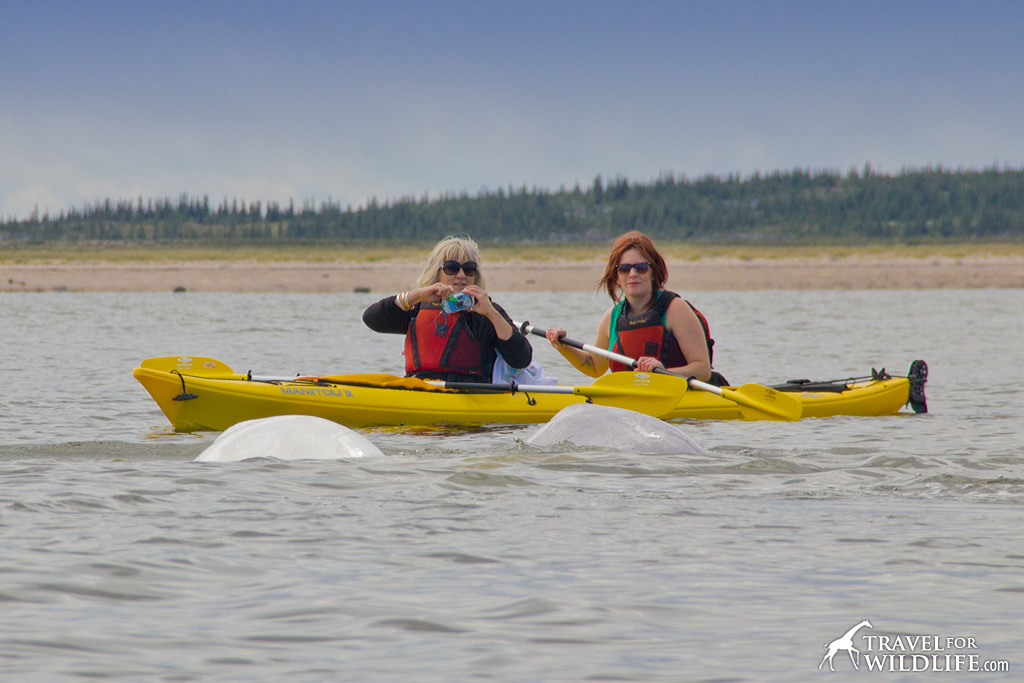Known as the “white whales”, belugas and narwhals are among the most social of all cetaceans. White whales are known to have lived in temperate seas in prehistoric times, but now occupy cold Arctic waters. In the summer months they migrate to southern latitudes and can be found in great numbers in the mouth of the Churchill River in Manitoba, Canada. That’s where we went kayaking and snorkeling with beluga whales!
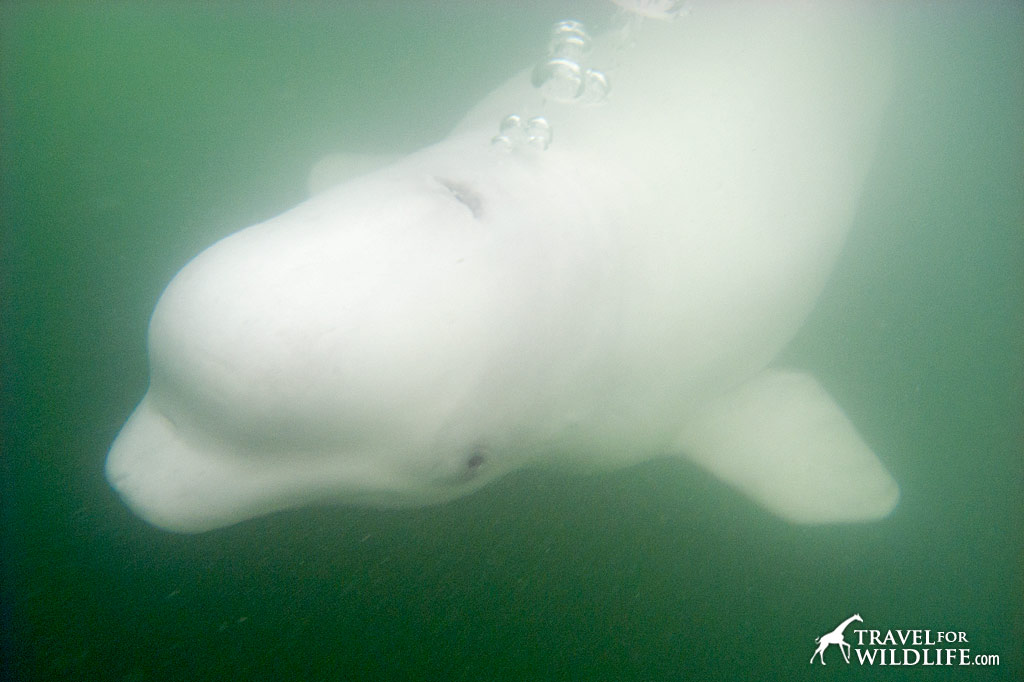
Not Your Average Whale
One feature peculiar to the beluga is its neck. Unlike most whales whose heads are basically fused to their bodies, the beluga can turn its head sideways to a near right-angle. This is because the vertebrae in a beluga’s neck are not fused together, which gives the beluga a very endearing appearance as it turns its head from side to side and smiles its little smile. You can see just how flexible their neck is in this video of us snorkeling with belugas in Churchill.
Belugas have a very thick layer of blubber that provides insulation against near-freezing water but it ends at the flexible neck, so their head always appears to be too small for their chubby body. Belugas that are especially well-endowed with blubber will show visible “rails” along each side of their belly where extra fat is contained.
Social communication
Another feature that separates the beluga from other whales is it’s flexible face. It is capable of a wide range of facial expressions, which not only adds to its cuteness, but is thought to be very useful for subtle communication between these sociable whales.
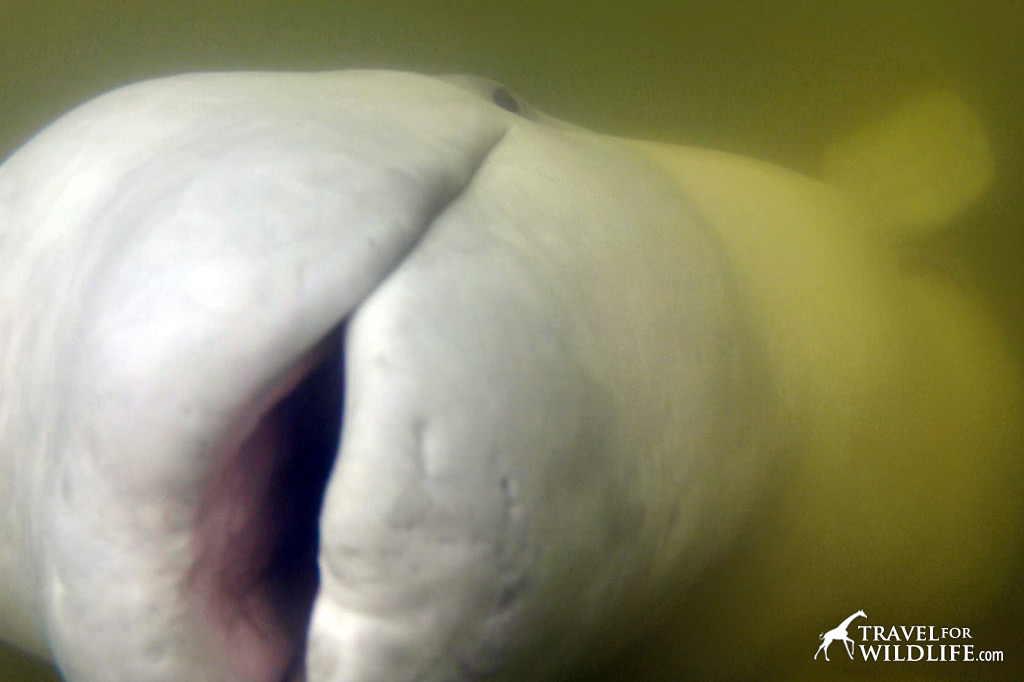
Belugas are highly vocal and produce a staggering array of sounds such as chirps and clicks and whistles and clangs. They may tweet like a bird (earning them the nickname “sea canary”) and can even mimic other sounds, including humans! Some of the sounds can be heard through the hulls of boats and sometimes even above water.
The beluga can also change the shape of its bulbous forehead (called a “melon”) which is used for echolocation. You can see the beluga in this video moving its melon as it examines my camera while kayaking.
A Finless Dolphin
Their scientific name, Delphinapterus means “dolphin without a wing”. Unlike most whales and dolphins, beluga whales have no dorsal fin, although they have a ridge along the back from mid-body to the tail. The reason for the absence of a dorsal fin is that a true fin might lose body heat, and would be at risk of getting damaged under the Arctic pack ice.
How to Age a Whale
Newborns are brown, and the skin gradually lightens through gray to white.
One way to age belugas is to look at their melon:
- In newborn calves, the melon is almost absent. Their beak is also undeveloped.
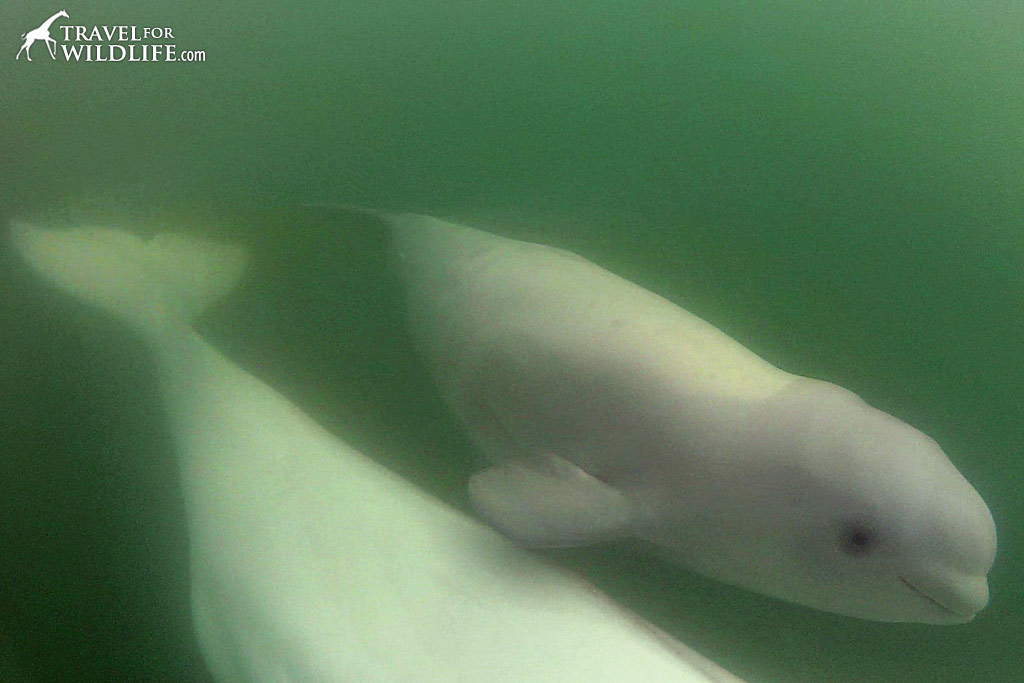
- In yearlings the melon is quite big but their beak is still undeveloped.
- In adult belugas (maturity reached at 5-8 years), the melon is fully developed and their beaks are fully developed allowing more complex facial expressions. At this stage, their neck is also highly flexible.
Their flippers are another a good indicator of age. The tips begin to curl upward as they get older. The flippers are capable of a wide range of movements, including close-quarter maneuvering and slow reverse swimming.
Do you want to see and snorkel with belugas in the wild? Then join the Belugas, Bears and Blooms tour provided by Frontier North Adventures and have a magical experience in Churchill, Manitoba!

Cristina Garcia
Zoologist and wildlife photographer. She has worked in the field with jackals, wolves, cheetahs, & leopards. She serves on the Board of Directors of SEE Turtles, a non-profit sea turtle conservation organization.
Read her posts at Travel For Wildlife and see more of her work at Truly Wild, & Our Wild Yard.

